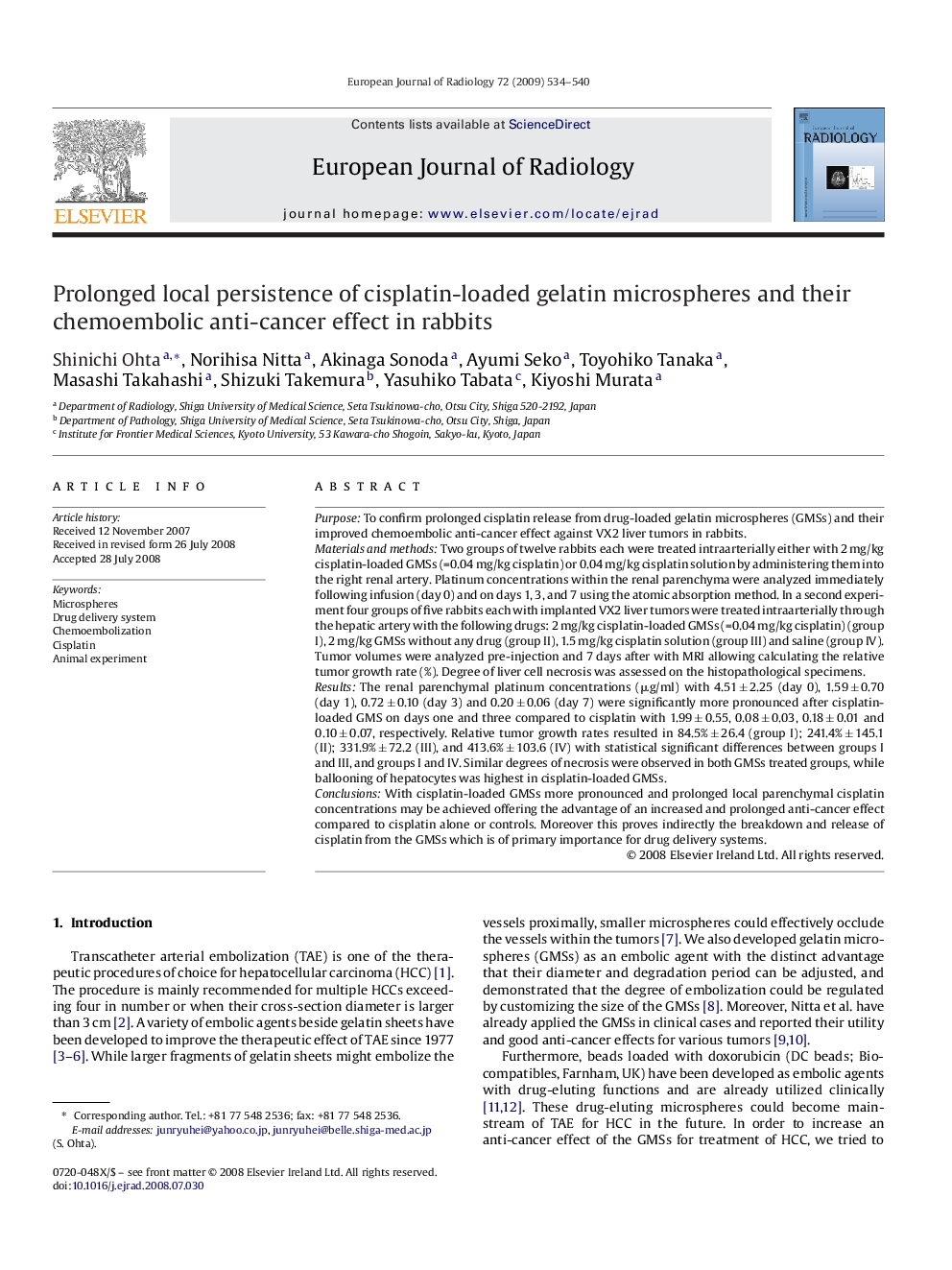| Article ID | Journal | Published Year | Pages | File Type |
|---|---|---|---|---|
| 4226829 | European Journal of Radiology | 2009 | 7 Pages |
PurposeTo confirm prolonged cisplatin release from drug-loaded gelatin microspheres (GMSs) and their improved chemoembolic anti-cancer effect against VX2 liver tumors in rabbits.Materials and methodsTwo groups of twelve rabbits each were treated intraarterially either with 2 mg/kg cisplatin-loaded GMSs (=0.04 mg/kg cisplatin) or 0.04 mg/kg cisplatin solution by administering them into the right renal artery. Platinum concentrations within the renal parenchyma were analyzed immediately following infusion (day 0) and on days 1, 3, and 7 using the atomic absorption method. In a second experiment four groups of five rabbits each with implanted VX2 liver tumors were treated intraarterially through the hepatic artery with the following drugs: 2 mg/kg cisplatin-loaded GMSs (=0.04 mg/kg cisplatin) (group I), 2 mg/kg GMSs without any drug (group II), 1.5 mg/kg cisplatin solution (group III) and saline (group IV). Tumor volumes were analyzed pre-injection and 7 days after with MRI allowing calculating the relative tumor growth rate (%). Degree of liver cell necrosis was assessed on the histopathological specimens.ResultsThe renal parenchymal platinum concentrations (μg/ml) with 4.51 ± 2.25 (day 0), 1.59 ± 0.70 (day 1), 0.72 ± 0.10 (day 3) and 0.20 ± 0.06 (day 7) were significantly more pronounced after cisplatin-loaded GMS on days one and three compared to cisplatin with 1.99 ± 0.55, 0.08 ± 0.03, 0.18 ± 0.01 and 0.10 ± 0.07, respectively. Relative tumor growth rates resulted in 84.5% ± 26.4 (group I); 241.4% ± 145.1 (II); 331.9% ± 72.2 (III), and 413.6% ± 103.6 (IV) with statistical significant differences between groups I and III, and groups I and IV. Similar degrees of necrosis were observed in both GMSs treated groups, while ballooning of hepatocytes was highest in cisplatin-loaded GMSs.ConclusionsWith cisplatin-loaded GMSs more pronounced and prolonged local parenchymal cisplatin concentrations may be achieved offering the advantage of an increased and prolonged anti-cancer effect compared to cisplatin alone or controls. Moreover this proves indirectly the breakdown and release of cisplatin from the GMSs which is of primary importance for drug delivery systems.
